Christian Lord was born in Oakland, California and received his BFA from the Cooper Union in 2005 and his MFA from Columbia University in 2013. Working in painting and sculpture his work explores the intersection of personal subjectivity, consumer culture and sexuality. He has exhibited nationally including Deitch Projects, Family Business, Salon 94 and Louis B. James in New York. He is also the recipient of the Michael S. Vivo Memorial Prize and the Fred A. Lane Prize for excellence in painting.
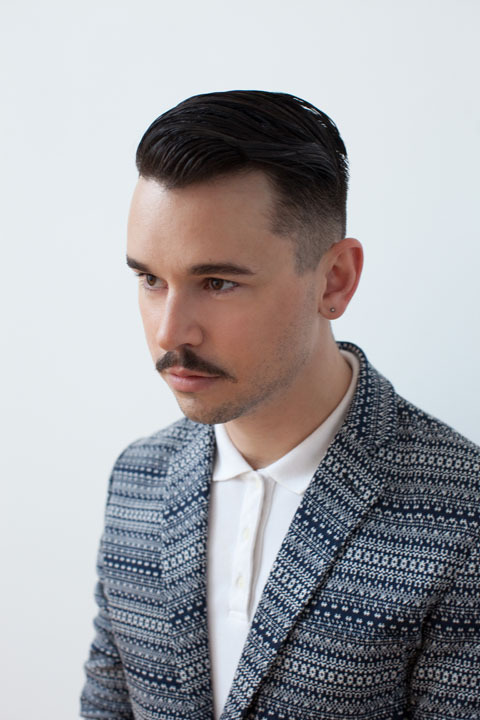
Tell us a little bit about yourself and what you do. I was born and raised in the Bay Area in California where I was involved in youth activism before I was seriously interested in art. I moved to New York City to attend the Cooper Union where I studied painting and photography and have stayed ever since. My work is primarily a painting and sculpture practice that explores the intersection of personal subjectivity, consumer culture, and sexuality.
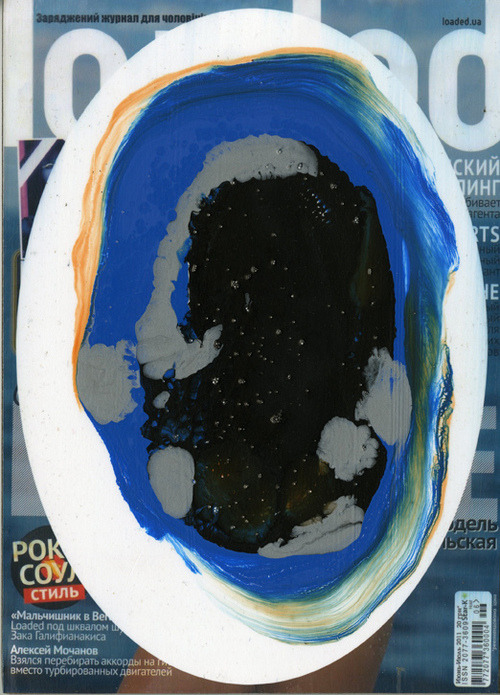
Christian Lord, Northern Shell 119, 2011 acrylic on Epson print on board, shelf 8.5 x 11 inches
What kinds of things are influencing your work right now? Right now I am interested in pressure as an organizing principle. More specifically I have been making sculptures, which use only confluent pressure as a means of cohesion. Whenever I see a sculpture, a piece of furniture, a building or even a body, my mind immediately tries to visualize how the thing is held together, why it doesn’t just fall apart, and what tools were needed to make it. This led me to the idea of pressure both literally and as a metaphor. In the sculptures, this is expressed by including the tools used in the making of the sculpture with the sculpture––thus creating a contiguous chain of making. The result is hopefully an autonomous object free of said preoccupation.
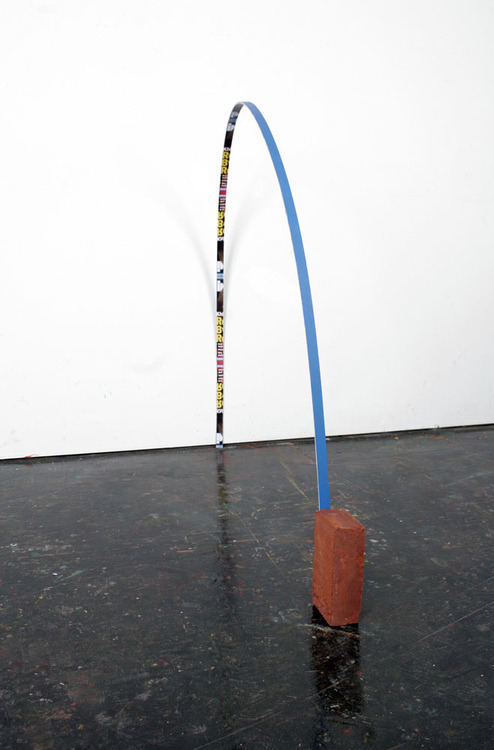
Christian Lord, Untitled (confluence series I ) 2013 Oak, paint, digital print, brick Dimensions variable
What are some recent, upcoming or current projects you are working on? A few things actually. The first is a wonderful project happening in early February which is a sort of conceptual fashion show of artist designed track suits made as a gesture of protest to the Russian governments treatment of LGBT peoples. I am thrilled to be included in such an illustrious roster of artists. The event which is called “Purple and Gold” is going to be in NYC opening at Louis B. James Gallery on February 7th. Additionally I am really excited to be working on a publication of writings by painters, which should be coming out in 2014. The project is being spearheaded by artist Dana Schutz and will comprise contributions from about twenty artists writing on a wide variety of topics. I am writing about the concept of “emergent adulthood” and provisionality in painting. The last thing is my first solo show in Brussels which will be opening in the fall at Ricou Gallery.
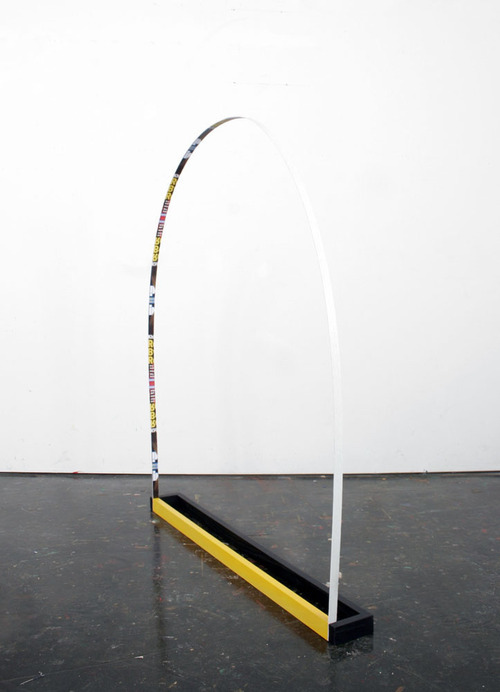
Christian Lord, Untitled (confluence series I ) 2013 Oak, paint, digital print, brick Dimensions variable
How did your interest in art begin? The earliest memory I have of what could be called art was a cataloging project of sorts where I drew and named all of my stuffed animals of which there were hundreds as well as other objects and personal effects in my room. I spent hours and hours trying to make exacting drawings which were labeled and given tittles. The endeavor was somewhere between a taxonomy and a character study, a line I still strive for.
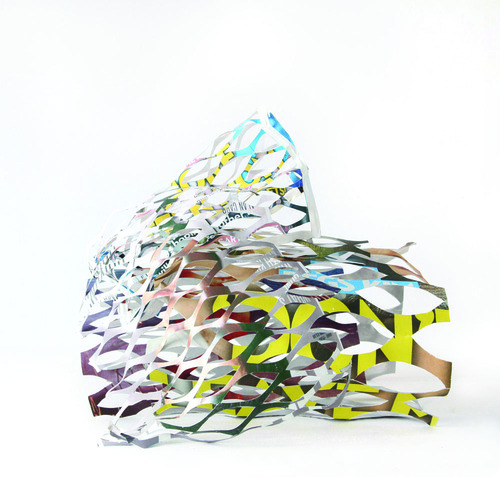
Christian Lord, Mesh I, 2012 Epson print and aluminum dimensions variable
What artists are you interested in right now? This is an ever changing list but I would say right now I have been thinking about Bracha Ettinger, Rebecca Horn, Mark Manders and Bernard Frize to name a few.
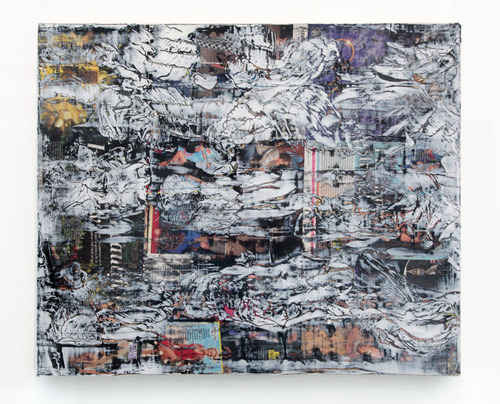
Christian Lord, Flow I , 2013 acrylic on tabloid on canvas panel 28 x 23 inches
What past trends in art do you think should never come back? Anything that is referred to as “Classic”, I cringe every time I hear that word. One only needs to read Robert Rosenblum’s “Transformations in Late Eighteenth Century Art” to realize how illusory and conditioned the word “classic” is in reference to art or anything for that matter. It seems to suggest an artwork that can transcend the values and anxieties of its own time which of course is impossible.
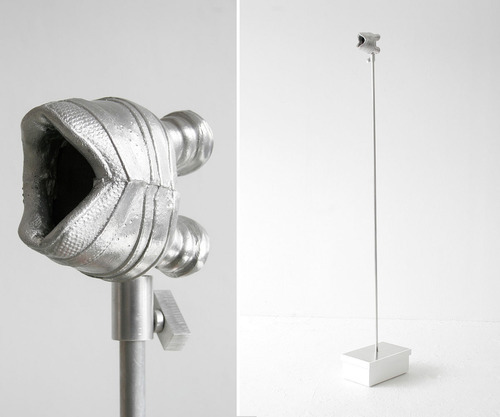
Christian Lord, Mouthpiece (side view detail ), 2012 Aluminum, speaker, sound recording, amplifier, wood
Who would you ideally like to collaborate with? I would really like to collaborate with a motion capture scientist. I have some ideas about making a compressed topographic surface from the data collected from motion capture, almost like a digitally derived bas-relief.
Tell us about your work process and how it develops? My working process is quite similar to the logic of a fetish object. It usually begins with an irrational attraction to a readymade image or commodity object, which then sits in the studio while it collects attachments, associations, thoughts and observations. This process can take a weeks, months or even years at which point I make an artwork about the thing.
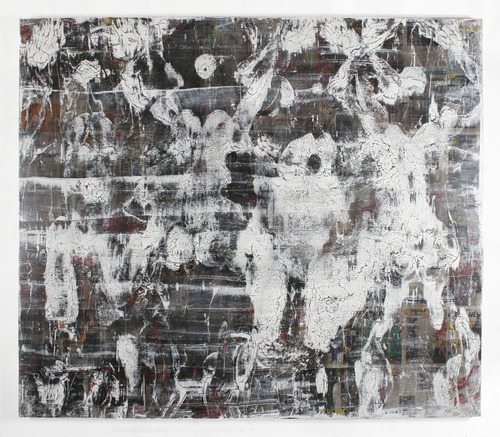
Christian Lord, Roll I ( In Touch for Moshé ), 2013 acrylic on tabloid on canvas panel 72 x 84 inches
What’s your absolute favorite place in the city/the world to be? This is a tough one but I would have to say “Hierve el Agua” which is a petrified waterfall and natural mineral spring to the east of Oaxaca in southern Mexico. It’s basically looks like nature made an infinity pool in the middle of a deserted canyon. If you go in the off season you might be lucky enough to not see a single person all day. It’s just you and the sound of this dripping water which you know has been going on for millennia.
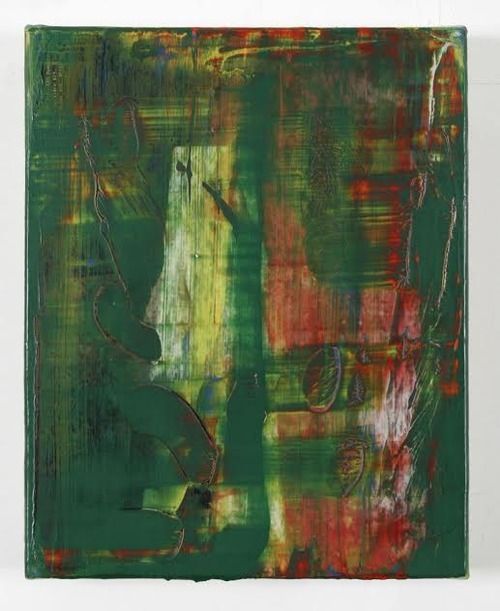
Christian Lord, Mime (Green), 2013 acrylic and collage on canvas 11 x 8.5 inches
What are you reading right now? Right now I am reading a book called “The Conquest of Cool” which is a historical analysis of advertising and its relationship to counterculture. The book maps the dramatic shifts in corporate culture and advertising which happened between the 1950’s and the 1960’s. For me the most striking part about the book is how the shifts that happened within that decade create a sort of social contrapposto to the changes that occurred in fine art.
